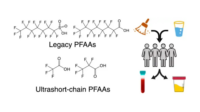Supply Chain Security: Humble Hologram Diversifies

|
The traditional notion of security systems operating independently of various building systems started becoming obsolete several years ago, as many end users developed the expectation that their security systems should work in conjunction with other building systems such as their heating, ventilation and air conditioning (HVAC), secondary fire and lighting.
Demand for these integrated buildings may have increased – the process of creating them didn’t magically become easy, though.
Many integrators see this redefinition of the traditional security perimeter as an unnecessarily complex and mounting challenge. The process of dovetailing various systems speaking different languages into a single, interoperable, easy-to-use system certainly sounds daunting.
Recent advances in software development kits, however, could very well prove to be critical in providing more integrators the tools they need to comfortably add this type of interoperability to their offerings. The key lies in coding; that is, simplifying the coding process used in integration.
The Case for Integration
Integration presents a unique opportunity to increase organizations’ bottom lines by delivering key savings.
Some estimates suggest that building owners spend approximately a third of their controllable operations budget on energy. That would make a building’s energy spend the single largest operating cost that is controllable. Security systems and energy efficiency are two phrases rarely used in the same sentence. However, organizations can reap energy savings and reduced costs by using security systems to cut back on energy consumption by tying their building management systems with their security systems.
Building management systems working in conjunction with security management systems can determine when HVAC systems should run at specific set points (based on occupancy levels) or be turned on or off. Video surveillance systems can determine where lighting is needed (or not needed) and adjust the light levels and power distribution accordingly. Building owners can use these energy-saving techniques to make their buildings operate more energy efficient, reduce the cost of building operations and improve their Energy Star ratings. Building designers can also earn LEED credits by incorporating this functionality during the planning and design stages of a building.
Let’s look at an office building which has two floors with 40 people working upstairs on the second level, and a maintenance crew of four working on the first. Building controls integrated with security systems could cut back on services for the first floor, greatly reducing its energy expenditure, all the while keeping people safe.
Increased Functionality with Integration
Integration also creates new operation efficiencies that were previously impossible. One end user, a prominent electronic components manufacturer, had a demanding set of requirements for its integration system. With a complex security system consisting of 684 cameras, more than 200 readers and 2,000 alarms on campus, it required secondary fire and environmental alarm access at its main console.
Once the fully-integrated system was operational, it allowed the central console to patch into the video surveillance system when an alarm was triggered. The video feed from the surveillance system could immediately show the fire or environmental issue to the security personnel, allowing them to assess the situation and determine the appropriate course of action. In turn, issues were solved quicker and the manpower needed to maintain worker and building safety was reduced.
A New Solution to an Old Problem
What is the best and most-efficient approach to achieving this level of integration?
In the past, designing these kinds of integrated systems was a costly, time-intensive process. It could take software engineers up to a week to properly configure various systems – often by means of painstaking trial-and-error. This method required software engineers to manually enter code and configure servers, which resulted in a patchwork of solutions that could not be replicated and was often rendered obsolete with software upgrades.
The biggest advantage offered by today’s software development kits is the elimination of manually entering code. This in turn reduces the installation and set up time for integrated systems from days to a matter of hours. With this added simplicity, a technician requires less training time and is able to get out in the field sooner. Furthermore, the codes can be saved and repurposed for other installations. In addition, the integrated building systems are compatible with future software updates and upgrades.
By empowering security integrators to create custom solutions to meet end user challenges, software development kits are expected to become necessary tools in meeting end user demand for advanced integration. These next-generation systems transform security systems from standalone units into integral building components that provide substantial ROI to building managers and owners. In this new era of integrated security perimeters, these benefits mean building managers should consider security systems as assets, not as operating expenses. In addition, this creates a multitude of opportunities for integrators to streamline end user building processes.


